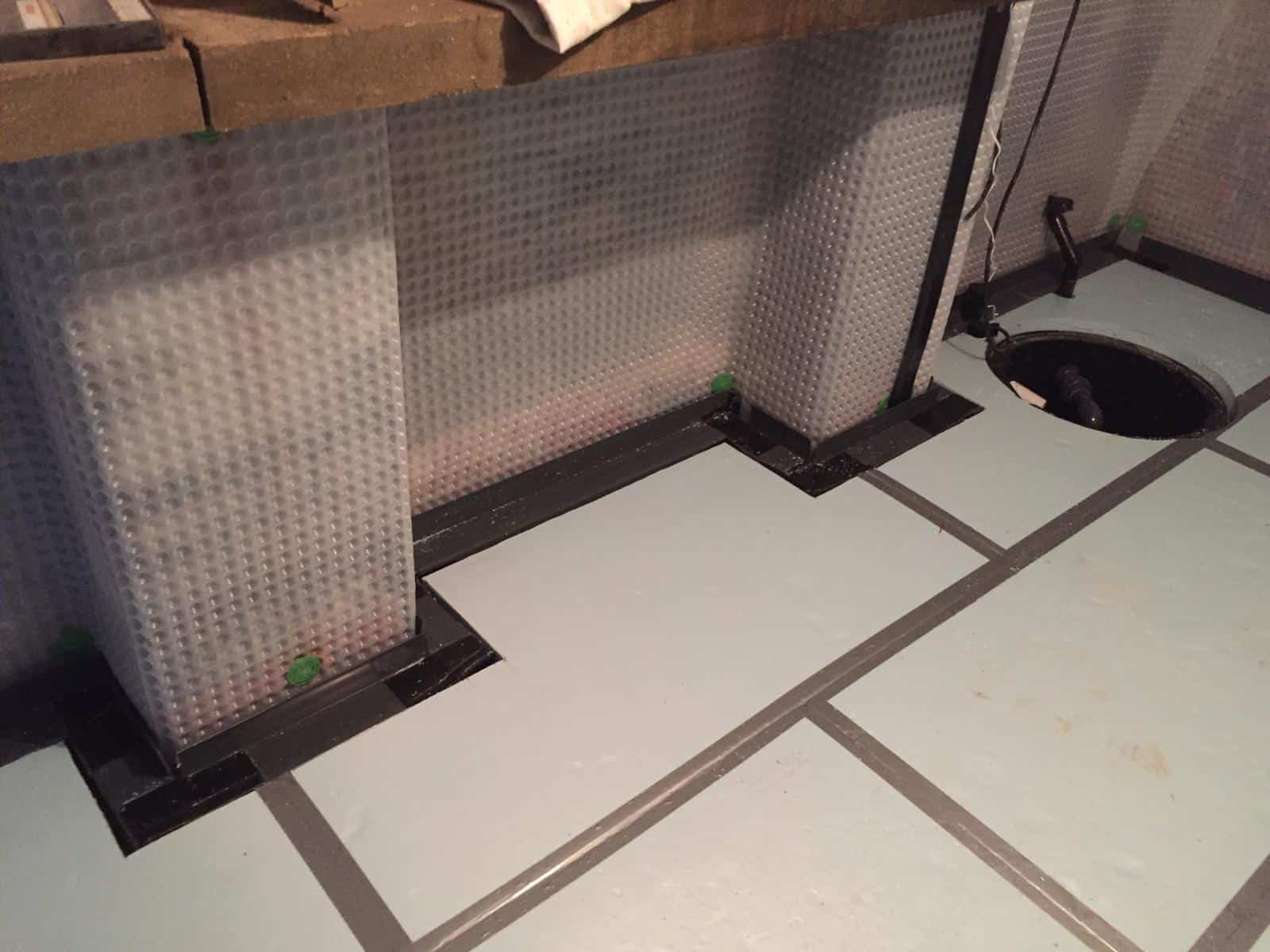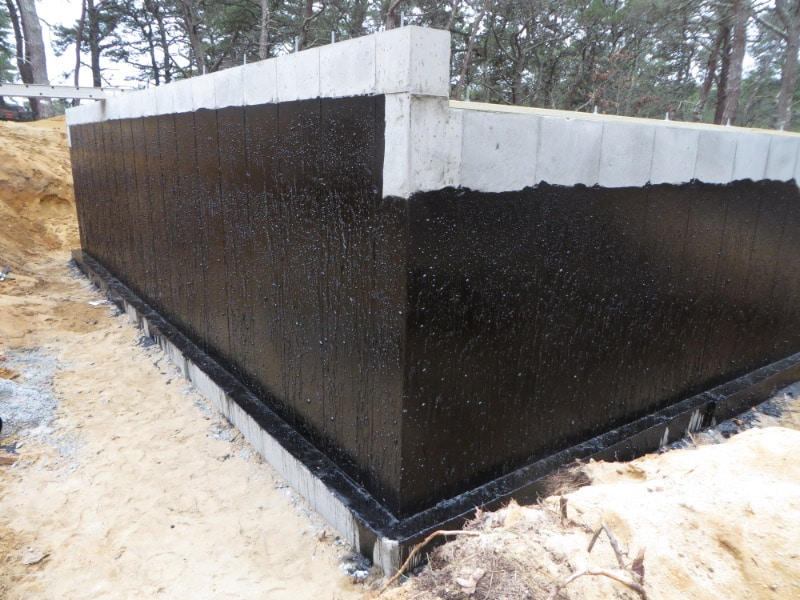How to identify early signs of rising damp: A must-read for landlords in damp proofing newcastle
How to identify early signs of rising damp: A must-read for landlords in damp proofing newcastle
Blog Article
Discovering the Different Techniques and Solutions for Effective Damp Proofing
Moisture in structures poses substantial difficulties to both structural honesty and interior air quality. Different techniques and options have actually emerged to combat this pervasive problem. From standard damp-proof membrane layers to cutting-edge chemical treatments, each method offers special benefits. Comprehending these alternatives is important for efficient moisture control. However, selecting the right solution depends upon details structure conditions and needs, triggering further expedition into one of the most efficient wet proofing techniques readily available.
Understanding the Reasons For Moisture
Dampness can occur from numerous resources, recognizing these causes is important for effective remediation. Commonly, moisture stems from three key sources: increasing wet, passing through moist, and condensation. Climbing damp occurs when groundwater travels upwards via porous materials, such as brick or stone, commonly as a result of a lack of an effective barrier (mould treatment newcastle). Permeating wet is typically brought on by exterior aspects, including roof covering leaks, defective gutters, or damaged walls, permitting water to infiltrate a building. Condensation, on the various other hand, arises from excess wetness in the air, frequently intensified by inadequate air flow and temperature level distinctions, bring about water droplets basing on surface areas. Determining these underlying problems is vital, as each kind of moisture requires a tailored strategy for remediation. Appropriate analysis assists in establishing the most effective options, ultimately guarding the structural integrity of a building and enhancing interior air high quality
Traditional Damp-Proof Membrane Layers

Chemical Damp-Proofing Solutions
Chemical damp-proofing solutions use an innovative technique to avoid wetness breach in buildings. These methods commonly entail the application of liquid chemicals that permeate masonry and develop an obstacle versus climbing moist. Typically made use of chemicals consist of silanes, siloxanes, and other water-repellent representatives that react with surface area materials to create a hydrophobic layer.The application process typically needs exploration holes right into the walls, injecting the chemical remedy, and enabling it to heal. This technique is particularly useful for older frameworks where typical damp-proof membrane layers might be unwise. Chemical damp-proofing can be much less disruptive and more economical than considerable renovation projects.While reliable, these options depend on appropriate application and environmental problems for peak efficiency. mould removal newcastle. Regular maintenance and monitoring are important to guarantee the long life of the damp-proofing treatment. On the whole, chemical damp-proofing stands for a versatile alternative for protecting structures versus moisture-related damages
Tooth Cavity Wall Surface Building Strategies
Cavity wall building strategies use countless benefits, particularly in moisture control and power effectiveness. By incorporating an air space in between 2 layers of stonework, these walls properly alleviate water ingress while boosting insulation. This mix not only secures structures from dampness however also adds to decreased power intake.
Benefits of Tooth Cavity Wall Surfaces
When taking into consideration effective wet proofing techniques, the advantages of tooth cavity walls stick out plainly. Cavity wall surfaces contain 2 separate layers, developing an air gap that efficiently reduces wetness penetration. This design lessens the danger of moisture, as the outer wall serves as a barrier against rain and water ingress. In addition, dental caries walls boost thermal insulation, which adds to power performance by minimizing warm loss. They additionally provide sound insulation, helping to produce a quieter indoor atmosphere. Additionally, the air gap enables air flow, which helps in moisture control and minimizes the possibility of mold and mildew development. These benefits not only enhance the total convenience of a structure however additionally add to its durability and structural integrity.
Moisture Control Methods
Effective dampness control approaches are critical in tooth cavity wall surface construction to ensure lasting defense versus dampness. One main method involves the incorporation of weep openings, which promote water drain from the dental caries, avoiding build-up. Furthermore, the usage of breathable membrane layers can aid handle moisture levels while permitting trapped vapor to run away. Correct placement of insulation is additionally crucial, as it must not obstruct water drainage courses. Moreover, guaranteeing that the outer fallen leaves of the cavity wall are created with waterproof products enhances general longevity. Routine upkeep checks are important to recognize any kind of clogs or damages early, protecting the structure's stability. Eventually, a combination of these strategies creates a durable protection versus dampness breach in cavity wall surfaces.
Insulation and Power Effectiveness
Insulation plays a crucial function in boosting energy efficiency within cavity wall surface building. By incorporating shielding materials, these wall surfaces develop a thermal barrier that reduces warm loss and minimizes power usage. Effective insulation not just aids preserve a secure indoor temperature level but additionally alleviates the threat of wetness, as it prevents condensation within the wall surface cavity. Various strategies, such as making use of stiff foam boards or mineral woollen, can be employed to achieve suitable insulation efficiency. In addition, correct installation is essential to guarantee that spaces and spaces are lessened, which can or else endanger energy effectiveness. Inevitably, a well-insulated cavity wall contributes considerably to overall sustainability and reduces cooling and heating expenses for property owners.
Exterior Damp Proofing Approaches
External wet proofing methods are vital for safeguarding structures from moisture infiltration. 2 reliable strategies consist of the application of water resistant membrane layers and the installation of French drains. These options help minimize water build-up and protect the stability of structures.
Waterproof Membrane Layer Application
While different methods exist for protecting against moisture ingress, the application of water resistant membranes continues to be a highly reliable outside moist proofing strategy. These membrane layers are normally made from products such as polyethylene, rubber, or modified bitumen, providing a durable obstacle against water infiltration. The installation procedure involves applying the membrane to the external surface areas of foundations or walls, making sure complete protection to stop leakages. Appropriate adhesion and sealing at joints are vital to maximizing efficiency. Waterproof membrane layers can be applied in various types, including liquid layers and sheet membranes, enabling versatility based on the details requirements of the framework. This approach not only shields buildings from dampness however additionally boosts their durability and architectural honesty.
French Drain Setup
One effective approach for managing groundwater and preventing wetness build-up around a building's foundation is the installment of a French drainpipe. This drainage system contains a trench filled with gravel and a perforated pipeline that reroutes surface water away from the foundation. Correct installation needs mindful preparation, making certain that the drainpipe inclines far from the framework to facilitate ideal water flow. Furthermore, the location of the drainpipe is important; it needs to be positioned in areas vulnerable to pooling or excess wetness. Routine maintenance, consisting of clearing debris from the gravel and ensuring the pipe continues to be unblocked, is crucial for long-term efficiency. Ultimately, a well-installed French drain can significantly minimize the danger of water-related problems in basements and foundations.
Interior Waterproofing Methods
Inside waterproofing strategies are crucial for shielding a building's inside from wetness seepage and prospective water damages. These strategies generally entail the application of specialized products and strategies made to develop a wetness obstacle within the framework. One typical technique is using water-proof coatings or sealants on wall surfaces and floorings, which avoid moisture from permeating surfaces.Additionally, mounting interior water drainage systems, such as sump pumps, can properly handle water accumulation in basements and creep spaces. Another technique entails making use of vapor obstacles, which are installed to inhibit dampness activity from the ground into living spaces.Moreover, attending to any type of cracks or voids in wall surfaces or foundations with appropriate sealants guarantees a detailed defense versus water intrusion. By implementing these interior waterproofing approaches, property owners can greatly lower the risk of mold growth, structural damages, and various other moisture-related problems. Correct implementation of these methods is vital for long-lasting defense and structure honesty.
Regular Upkeep and Evaluation Practices
Regular upkeep and evaluation methods are essential for ensuring the lasting effectiveness of wet proofing options in any structure. Regular checks enable homeowner to determine very early indicators of dampness invasion, such as peeling off paint, mold growth, and stuffy odors. These signs can indicate underlying problems that need prompt attention.Inspections must be carried out at the very least every year, concentrating on susceptible locations like basements, creep rooms, and exterior walls. Throughout these evaluations, property owners need to check out sealants, drainage systems, and air flow to confirm they work correctly.Additionally, maintaining downspouts and gutters is crucial, as blocked systems can bring about water accumulation near the foundation. Executing a normal maintenance timetable, along with timely repair work, can substantially prolong the life-span of moist proofing steps and shield the structural honesty of the building. Positive measures eventually contribute to the general health and wellness of the living atmosphere.
Regularly Asked Inquiries
For How Long Does Damp Proofing Normally Last?
The period of damp proofing effectiveness differs, typically lasting in between 20 to half a century. Elements such as application top quality, ecological conditions, and upkeep techniques substantially affect the longevity of the wet proofing treatment.

Can I Damp Evidence My Home Myself?
The private contemplated the expediency of DIY damp proofing. With appropriate study and the ideal materials, it is possible. Nevertheless, they additionally identified the importance of expert guidance to ensure lasting efficiency and avoid future problems.
What Are the Signs of Inefficient Damp Proofing?
Indications of inadequate moist proofing include persistent mildewy odors, noticeable mold development, peeling off paint, damp spots on wall surfaces, and wood degeneration - mould removal newcastle. Homeowners must attend to these problems quickly to stop more damage and health and wellness problems
Does Damp Proofing Affect Indoor Air High Quality?

Just How Much Does Expert Damp Proofing Cost?
Specialist damp proofing costs vary significantly, commonly varying from $1,000 to $5,000 depending upon the home's size, the level of the damp concern, and picked methods. Each situation calls for a customized assessment for precise rates. Generally, moisture originates from three primary sources: climbing moist, penetrating wet, and condensation. When thinking about efficient moist proofing techniques, the here advantages of tooth cavity walls stand out prominently. Exterior moist proofing approaches are crucial for protecting frameworks from wetness infiltration. While different techniques exist for preventing moisture ingress, the application of water resistant membranes remains a very effective outside wet proofing strategy. Indications of ineffective damp proofing consist of consistent musty odors, noticeable mold growth, peeling off paint, moist spots on wall surfaces, and wood degeneration.
Report this page